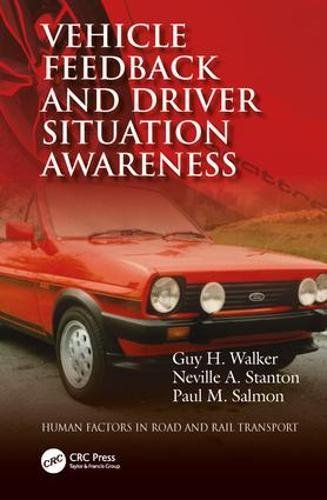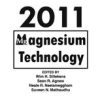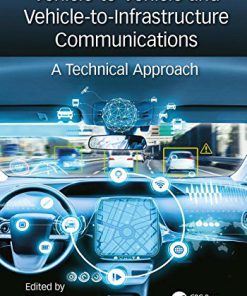Vehicle Feedback and Driver Situation Awareness 1st Edition by Guy Walker, Neville Stanton, Paul Salmon 1317147848 9781317147848
$50.00 Original price was: $50.00.$25.00Current price is: $25.00.
Vehicle Feedback and Driver Situation Awareness 1st Edition by Guy H. Walker, Neville A. Stanton, Paul M. Salmon – Ebook PDF Instant Download/DeliveryISBN: 1317147848, 9781317147848
Full download Vehicle Feedback and Driver Situation Awareness 1st Edition after payment.

Product details:
ISBN-10 : 1317147848
ISBN-13 : 9781317147848
Author: Guy H. Walker, Neville A. Stanton, Paul M. Salmon
A potentially troubling aspect of modern vehicle design – some would argue – is a trend for isolating the driver and reducing vehicle feedback, usually in the name of comfort and refinement but increasingly because of automation. There is little doubt cars have become more civilised over the years, yet despite this, the consequences of driver behaviour remain to a large extent anecdotal. Readers will have heard such anecdotes for themselves. They usually take the form of drivers of a certain age recalling their first cars from the 1970s or 80s, in which “doing 70 mph really felt like it”. The question is whether such anecdotes actually reflect a bigger, more significant issue that could be better understood. Related questions have been explored in other domains such as aviation, where the change to ‘fly-by-wire’ did indeed bring about some occasionally serious performance issues that were not anticipated. Despite some clear parallels, automotive systems have been left relatively unstudied. The research described in this book aims to explore precisely these issues from a Human Factors perspective. This means connecting the topics of vehicle feel, vehicle dynamics, and automotive engineering with the latest research on driver situation awareness. The problem is explored experimentally from a variety of theoretical viewpoints but the outcomes are consistently practical. Here we have a promising new avenue along which the driver experience can be enhanced in novel and insightful ways. Tools and templates are provided so that engineers and designers can try different ways to boost vehicle safety, efficiency and enjoyment from a human-centered perspective. Association of American Publishers (AAP) Finalist for the 2019 PROSE Award Features Diagnosis of how vehicle feel impacts driver situation awareness, and how this could aid future vehicle designs Multi-theory approach to driver situation awareness, and how different views of this important concept give rise to different insights Comprehensive analysis of situation awareness in driving, the information requirements of drivers, and how these needs can be supported Practical descriptions of how state-of-science Human Factors methods have been applied in practice
Vehicle Feedback and Driver Situation Awareness 1st Table of contents:
Chapter 1 Introduction
1.1 When 70 mph Really Felt Like It
1.2 Vehicle Dynamics
1.3 Driver Situation Awareness
1.4 Lapping the Driver Feedback Test Track
Chapter 2 What’s Happened to Car Design?
2.1 Introduction
2.1.1 Where Does the Feedback Come From and Who Is It For?
2.1.2 The Eurofighter Effect
2.2 What Was Done
2.2.1 Design
2.2.2 Participants
2.2.3 Materials
2.2.3.1 Vehicles
2.2.3.2 Apparatus
2.2.3.3 Other Materials
2.2.3.4 The Test Route
2.2.4 Procedure
2.3 What Was Found
2.3.1 Treatment of the Data
2.3.2 Analysis of Control Measures
2.3.3 Analysis of Concurrent Verbal Protocol Data
2.3.3.1 Individual Driver SA
2.3.3.2 Systemic Driver SA
2.3.4 Do the Findings Matter?
2.4 Summary
Chapter 3 Feedback Properties of Vehicle Controls
3.1 Introduction
3.1.1 Manual Control
3.1.2 The Tracking Loop
3.2 Powertrains
3.2.1 Engine Basics
3.2.2 Vehicle Speed Control as a Tracking/Manual Control Task
3.2.3 Driver Feedback and Powertrain Design
3.3 Transmission Systems
3.3.1 Gearbox Basics
3.3.2 Gear Changing as a Tracking/Manual Control Task
3.3.3 Driver Feedback and Transmission Design
3.4 Braking Systems
3.4.1 Braking System Basics
3.4.2 Braking as a Tracking/Manual Control Task
3.4.3 Driver Feedback and Braking System Design
3.5 Steering Systems
3.5.1 Steering Basics
3.5.2 Vehicle Steering as a Tracking/Manual Control Task
3.5.3 Driver Feedback and Steering System Design
3.6 Chassis Design
3.6.1 Chassis Basics
3.6.1.1 Rear-Wheel Drive
3.6.1.2 Front-Wheel Drive
3.6.1.3 Four-Wheel Drive
3.6.2 Vehicle Control as a Tracking/Manual Control Task
3.6.3 Driver Feedback, Chassis Design and Vehicle Handling
3.7 Summary
Chapter 4 Situation Awareness Requirement Analysis
4.1 Introduction
4.2 Methods for Extracting SA Requirements
4.2.1 The Individual SA Lens
4.2.2 The Team SA Lens
4.2.3 The System SA Lens
4.3 What Was Done
4.3.1 Design
4.3.2 Methodology
4.3.2.1 Task Analysis
4.3.2.2 Hierarchical Task Analysis
4.3.2.3 The Hierarchical Task Analysis of Driving (HTAoD)
4.3.2.4 Validation of the Task Analysis
4.3.3 SA Requirements
4.4 What Was Found
4.5 Summary
Chapter 5 The Ironies of Vehicle Feedback
5.1 Introduction
5.1.1 Ironies (and Problems)
5.1.2 Measuring Situation Awareness
5.2 What Was Done
5.2.1 Design
5.2.2 Participants
5.2.3 Materials and Methodology
5.2.3.1 Driving Simulator
5.2.3.2 Simulation Road Course
5.2.3.3 Objective States for the SA Probes
5.2.3.4 Probes for SA Subjective States
5.2.4 Procedure
5.2.5 Data Reduction
5.3 What Was Found
5.3.1 ‘Objective’ Situation Awareness (Probed Recall)
5.3.1.1 Calculation of Sensitivity Measures
5.3.1.2 Statistical Tests on D-Prime versus Feedback Condition
5.3.1.3 Comparisons with the Visual Baseline
5.3.1.4 Multiple Comparisons
5.3.1.5 Do the Findings Matter?
5.3.2 ‘Subjective’ Situation Awareness (Self-Report)
5.3.2.1 Proving the Null Hypothesis
5.4 Summary
Chapter 6 Comparing Car Driver and Motorcyclist Situation Awareness
6.1 Introduction
6.1.1 Human Factors and the Art of Motorcycle Maintenance
6.1.2 Cars versus Motorbikes
6.1.3 Distributed Situation Awareness
6.2 What Was Done
6.2.1 Design
6.2.2 Participants
6.2.3 Materials
6.2.4 Procedure
6.3 What Was Found
6.3.1 Analysis of Control Measures
6.3.2 Analysis of Concurrent Verbal Protocol Data
6.3.2.1 Data Reduction
6.3.2.2 Rate of Verbalisations
6.3.3 Results of Systemic SA
6.3.3.1 SA Content
6.3.3.2 SA Quantity
6.3.3.3 Conversion of Information into Knowledge
6.3.4 Effect Size Summary
6.4 Summary
Chapter 7 Cognitive Compatibility
7.1 Introduction
7.1.1 Gulfs of Evaluation
7.1.2 Less Could Be More
7.1.3 SA as a Network
7.1.4 Exploratory Analysis
7.2 What Was Done
7.2.1 Design
7.2.2 Procedure
7.3 What Was Found
7.3.1 Extracting Semantic Content from the Concurrent Verbal Protocols
7.3.2 Propositional Networks: Analysis of Structure
7.3.3 Propositional Networks: Phenotype and Genotype Schemata
7.3.4 Propositional Networks: Thematic Analysis
7.4 Summary
Chapter 8 Driver Training and Situation Awareness
8.1 Introduction
8.1.1 The Normative Gold Standard
8.1.2 Advanced Driving
8.1.3 Predictive SA
8.1.4 Normative versus Formative SA
8.1.5 Measuring and Representing Driver SA
8.2 What Was Done
8.2.1 Design
8.2.2 Participants
8.2.3 Materials
8.2.3.1 Experimental Booklet
8.2.3.2 Test Route
8.2.4 Procedure
8.2.4.1 Development of the Participant Pool
8.2.4.2 Procedure for the Advanced Driver Group
8.2.4.3 Procedure for the Control groups
8.3 What Was Found
8.3.1 Data Reduction and the Creation of the Networks
8.3.2 Hypothesis #1: Quantity of Information
8.3.3 Hypothesis #2: Structure of Information
8.3.4 Hypothesis #3: New Information Elements
8.3.5 Hypothesis #4: Old Information Elements (But Increased Importance)
8.3.6 Hypothesis #5: Behaviour
8.4 Summary
Chapter 9 Driver SA and the Future City
9.1 Introduction
9.1.1 Journey into Mega-City One
9.1.2 Intelligent Transport Systems
9.1.3 Street Patterns and Network Types
9.1.4 Network Metrics
9.1.5 The Problem
9.2 What Was Done
9.2.1 Design
9.2.2 Real-Life Urban Networks
9.2.3 Development of Network Models
9.2.4 Driver SA
9.2.5 Network Demand
9.3 What Was Found
9.3.1 Driver SA versus Journey Duration
9.3.2 Driver SA versus Journey Length
9.3.3 Driver SA versus Journey Cost
9.3.4 SA and Carbon Emissions
9.3.5 Optimisation of Driver SA
9.4 Summary
Chapter 10 Conclusions
10.1 Implications for the Study of Situation Awareness
10.1.1 Entering the Mainstream
10.1.2 The First and Second ‘Cognitive Revolutions’
10.1.3 Contention and Controversy
10.2 Implications for Future Vehicle Design
10.2.1 The Final Frontier
10.2.2 The SA Design Process
10.2.3 SA Design Principles
10.2.4 Principles in Practice
People also search for Vehicle Feedback and Driver Situation Awareness 1st:
vehicle awareness
driver feedback devices
driver feedback sign
situational awareness driving safety
a vehicle sound system should
Tags: Vehicle Feedback, Driver Situation, Awareness, Guy Walker, Neville Stanton, Paul Salmon
You may also like…
Romance - Contemporary Romance
Computers - Hardware
Analog Automation and Digital Feedback Control Techniques 1st Edition Jean Mbihi
Engineering - Civil & Structural Engineering
Relationships & Lifestyle - Psychological Self-Help
Arts - Architecture
Housing Fit For Purpose: Performance, Feedback and Learning 1st Edition Fionn Stevenson
Computers - Security












